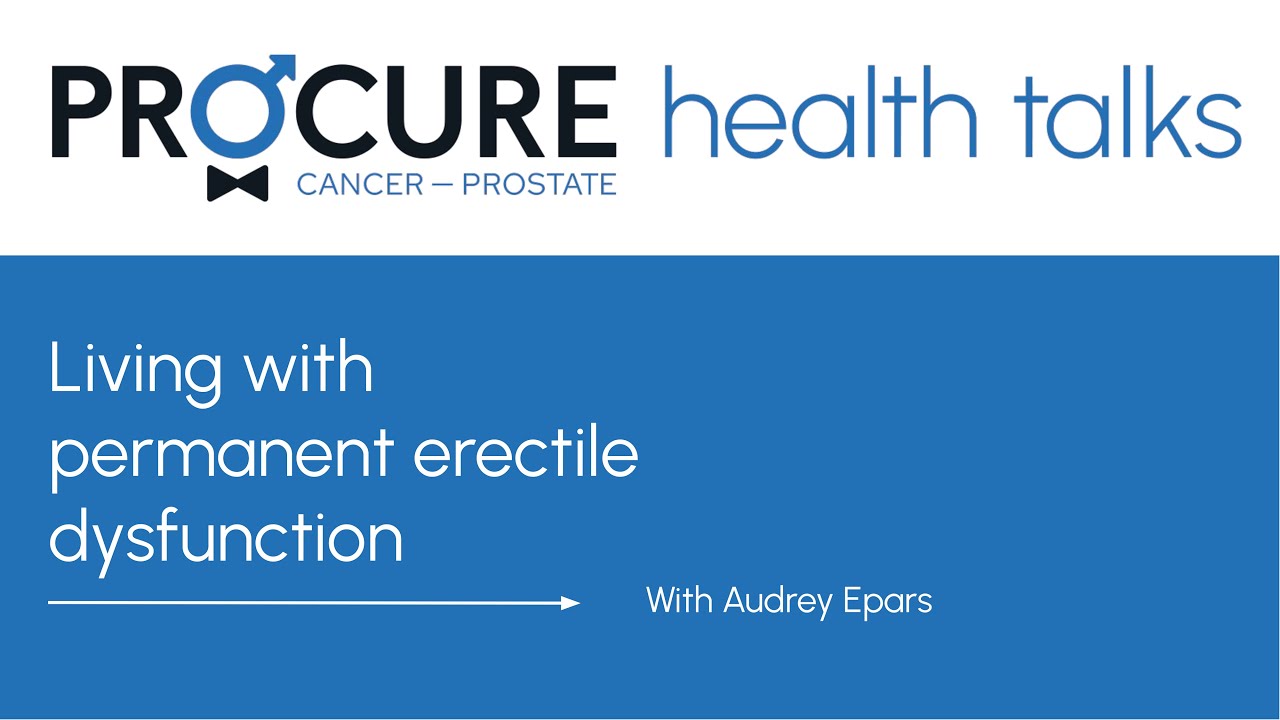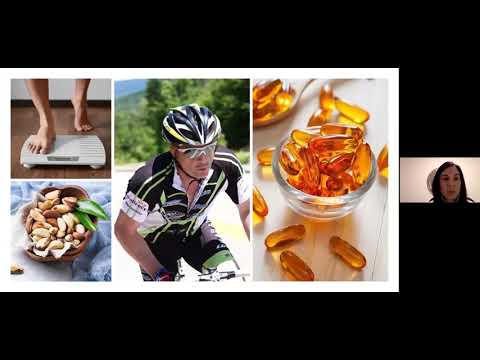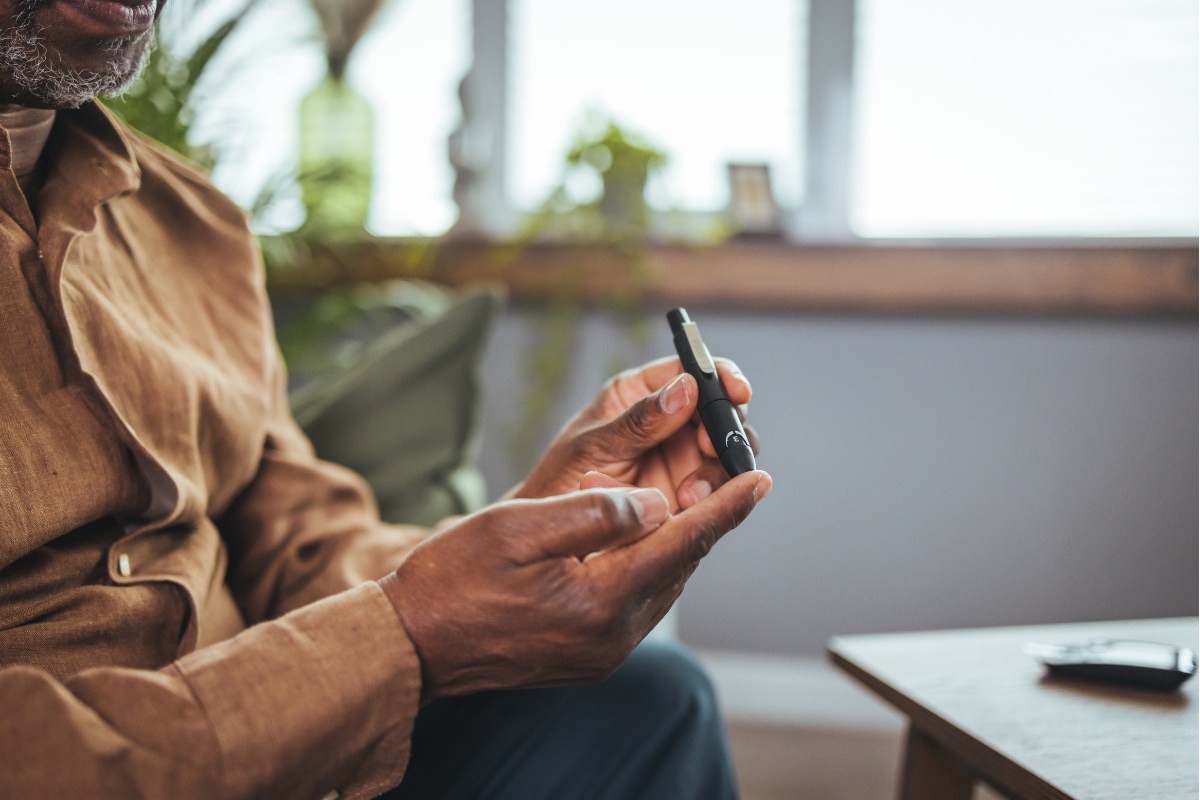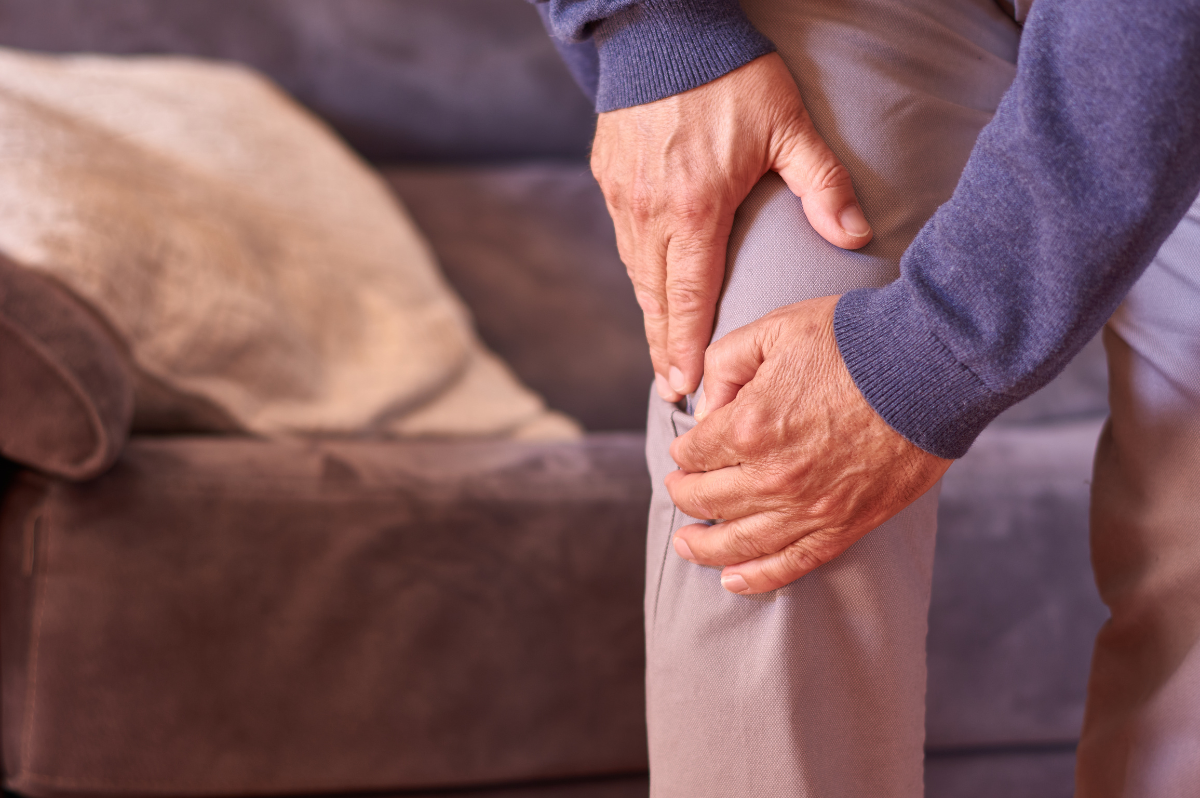Healthy body weight
Healthy body weight
Healthy body weight
This section focuses on the importance of maintaining a balanced weight throughout the journey of battling prostate cancer. It examines the impact of weight on health, treatment response, and quality of life, while offering practical advice for weight management, adopting a healthy lifestyle, and incorporating physical activity.
What is a healthy weight?
What is your body mass?
A healthy weight is based on your Body Mass Index, or BMI. A normal BMI of between 18.5 and 24.9 is considered healthy and associated with a lower risk of developing health problems. A BMI higher than 24.9 (overweight) or 30 (obese) is associated with a higher risk of health problems. Consult the table on the next page to calculate your BMI.
What is your waist circumference?
You can also estimate your health risk by looking at the circumference of your waist. Abdominal obesity is associated with a higher risk of developing various chronic diseases such as cardiovascular diseases, diabetes, and certain cancers. The waist circumference for women should be less than 35 inches (88 cm). For men, waist circumference should not exceed 40 inches (102 cm).
Involuntary weight loss
The amount of weight you lose and the speed at which you lose it are very important even if you could do to lose a few pounds at the start.
Significant weight loss over a short time can have dire consequences. Rapid weight loss scan weaken your immune system, slow the healing process, and limit your ability to perform daily activities. Most of the time, patients lose weight because they are eating less than normal. In 15–25% of men with cancer, the loss of appetite or desire to eat is usually present from the time of diagnosis and can lead to treatment side effects.
Unwanted weight gain
Weight gain is a common side effect of prostate cancer. The reason for this weight gain is often linked to hormone therapy and its various factors. Being overweight or obese can have repercussions on your quality of life and can also increase your risk of developing a more aggressive prostate cancer or relapse and decreases your chances of survival.
Tricks to remedy the situation
Tips to prevent unwanted weight loss
- Eat at regular intervals throughout the day (every 2 or 3 hours). Do not wait until you feel hungry.
- Have five or six snacks or small meals each day instead of fewer, larger meals.
- If you are really hungry, eat as much as you can, regardless of the time of the day.
- Avoid beverages during meals, as this can make you feel fuller faster. Drink between meals instead.
- Keep your favorite foods within reach. This may inspire you to eat more.
- Ask your dietitian about liquid or powdered nutritional supplements.
- Let new recipes inspire you and set up the table with nice dishes and cutlery.
Try this…
- Choose liquids with higher calories and more nutrients. Instead of drinking plain water, coffee, tea or broth, choose dairy or soy beverages, juices, cream soups, smoothies, milkshakes and hot chocolate prepared with milk.
- Choose healthy, high-calorie snacks such as full-fat cheeses, nuts or seeds, nut butters, vegetables or crackers spread with hummus or other dip, granola, milk puddings, dried fruit and Greek-style yogurt.
- Add a few teaspoons of mild-tasting flavored vegetable oil, such as canola oil, to soups, oatmeal, smoothies or milkshakes. Each teaspoon of oil will add 45 calories of healthy fat to your meal. Olive oils, flax seeds or grape seeds are also a good choice, but their taste is more pronounced.
- Take a walk before meals to stimulate your appetite.
Tips to prevent unwanted weight gain
- Eat reasonable portions, but allow yourself to enjoy a wide variety of foods.
- Choose leaner meats.
- Select low-fat dairy products.
- Add less fat to food.
- Use low-fat cooking methods such as broiling, steaming, grilling or roasting.
- Eat when you are hungry and try to reduce eating for other reasons such as boredom, habit or when you are anxious or feeling down. Keeping a food diary may help.
- Find time to be physically active to help balance the extra calories you eat.
Try this…
- Choose low-calorie foods such as fruits, vegetables and whole grains. These foods also contain fiber, which will help you feel full longer.
- Limit foods that are high in calories and low in nutritional value (processed foods, sweetened beverages) and alcoholic beverages.
Finding the right balance
It is important to keep track of your weight before and after cancer treatment. Weigh yourself every week so that weight loss or gain can be caught early and addressed immediately. Do not hesitate to consult a nutritionist.
Benefits of physical activity
I’m a sports fan but… Exercise doesn’t necessarily have to be in a gym, community centre, or as part of an exercise class. Most of the time, the hardest part is getting motivated and actually starting. Need some inspiration?
Many Quebecers are physically inactive. Studies show that both adults and young people are sedentary for the most of their waking hours. They are not active enough to get the maximum health benefits from physical activity. Physical activity is an important part of a healthy lifestyle.
Being active:
- helps healthy growth and development
- makes us stronger
- gives us energy
- keeps us independent as we get older
Physical activity is also one of the best ways to get and maintain a healthy weight. Men who are overweight or obese are at a greater risk of a more aggressive prostate cancer.
How to reduce your risk of prostate cancer
Each week, set aside at least 150 minutes (2.5 hours) for moderate exercise such as fast walking, biking, or mowing the lawn. Evidence shows that walking 20 minutes a day, the equivalent of 1.6 km, reduces the risk of prostate cancer by 30%. Exercise must be vigorous enough to increase your heart rate without being too demanding.
Tips for staying active
Exercise doesn’t necessarily have to take place in a gym, recreation center, or exercise class. Most of the time, the hardest part is getting motivated and actually starting. Need some inspiration? Here is some expert advice on how to be active each day
The type and amount of physical activity that you can do after prostate cancer treatment depend on:
- The type of treatment you receive
- Your overall health and physical condition
Heavy lifting and strenuous exercise should be avoided for several weeks following a radical prostatectomy, in order to allow the body to heal completely. Talk to your doctor or healthcare team before starting or resuming an exercise or physical activity program.
Bones and muscles
As you know, regular exercise can help manage your weight, build muscle mass, keep your bones strong, and reduce your fatigue and anxiety. Physical activity can also help you with the side effects of prostate cancer treatment. Many prostate cancer treatments can have negative effects on your body such as osteoporosis and loss of muscle mass. Both side effects can be improved through strength and aerobic training.
Strength training
Strength training consists of resistance exercises such as weight lifting, push-ups, pull-ups, etc. These types of exercises can help you increase muscle mass and maintain healthy bones.
Aerobic training
Aerobic training consists of cardiovascular exercises such as fast walking, dancing, hiking, swimming, running, bicycling, and tennis. Cardio helps your body burn calories, improves your heart health, and increases your metabolism and blood circulation. Aerobic exercises are also effective at increasing your body’s natural level of antioxidants and eliminating inflammatory molecules that cause cancer.
Combining aerobic and strength training
The best way to optimise health benefits is to use a program that combines both strength and cardio training.
For example, you can walk for 30 minutes every day at a comfortable pace and lift weights three times a week. Be sure to work the different parts of your body and to rest between weightlifting days. You can work on your chest muscles and triceps one day, switch to your back muscles and biceps the next day, and continue with your legs and shoulders on the third day. You should consult a certified professional or physiotherapist to instructions on how to perform the various exercises and maximize the benefits from your workouts.
Other pages that might interest you
Additional Information - Nutrition and healthy body

Living with permanent erectile dysfunction
Managing permanent ED after prostate cancer is delicate. Discover strategies to cope with it.

Hip fracture? No thank you! Male bone health
Dietary and physical adjustments can improve bone health and reduce the risk of fractures.

Nutrition during and after your treatment
Adjustments you can make to your diet or whether you have or are being treated with radiation therapy, hormone therapy, or chemotherapy with clinical dietitian.

Living Fully, Drinking Moderately
Benefits of Drinking Less and Flavourful Recipes to Guide You Are you aiming for a healthy start to the year by reducing or completely abstaining from alcohol? It can be challenging, especially when many of our social activities revolve around drinking, such as “Happy Hours” or going to a bar with friends for a sporting […]

Rediscovering Well-being After Treatments
After completing treatments, people often feel a mix of concern and relief. The main focus during this transition is rediscovering well-being.

Do you have a curved penis?
Is your penis curved? Does it curve to the left, right, upward, or downward? You have a curved penis and you or your partner want to know why?

Orgasm without erection?
It is entirely possible for a man to achieve orgasm without an erection or penetration and there are several ways to achieve this.

Simple and easy-to-make healthy recipes
Regardless of the season, why not take the opportunity to cook simple and easy-to-make healthy recipes that are rich in nutrients beneficial for your heart and prostate?!

Fresh start with new habits
We don’t have to wait until January 1st to make a fresh start and adopt new habits. This decision can be made at any time during our life.

Does warm milk help you sleep better?
Can a glass of warm milk help you sleep better in the arms of Morpheus? The Rumor Detector wondered if the research has confirmed this.

I am a little bit diabetic
My doctor informed me that I am a little bit diabetic and that I will have to make important changes to my lifestyle.

Caring for your bones in 5 points
Nicknamed “the silent thief” due to the absence of symptoms, osteoporosis is often only detected at a more advanced stage following a fracture.
Sources and references
Last medical and editorial review: April 2024. See our web page validation committee and our collaborators by clicking here.


